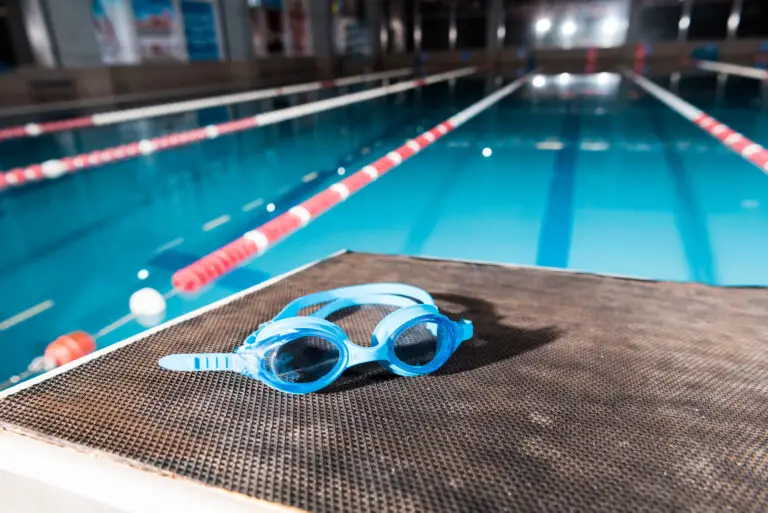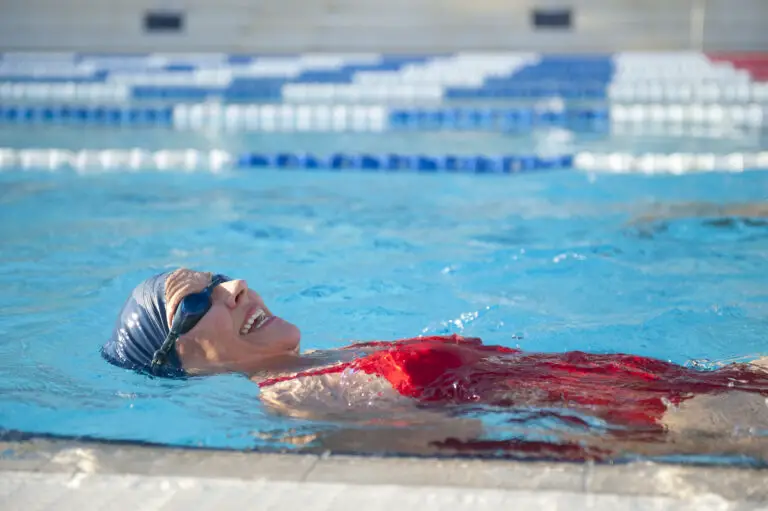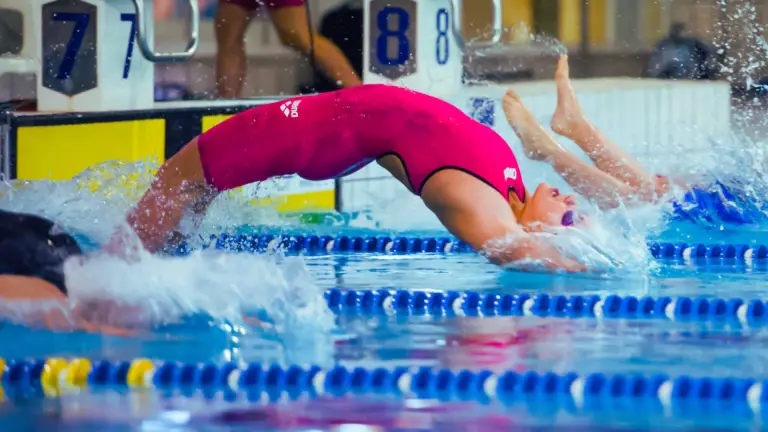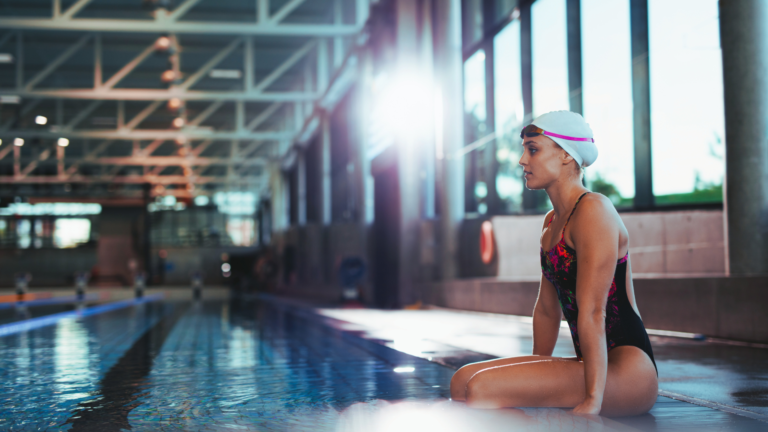Hello, fellow swimmers and fitness enthusiasts! Today, we’re diving into a topic that’s been making waves in the swimming community: Is swimming primarily an aerobic or anaerobic exercise? This question may seem like a drop in the ocean, but it’s actually quite significant when it comes to understanding the benefits of swimming and how to tailor your workouts for maximum impact.
Swimming is a popular form of exercise and for good reason. It’s a full-body workout that engages all major muscle groups and is also low-impact, making it a great choice for people of all ages and fitness levels. Plus, there’s something incredibly soothing about being in the water, isn’t there?
But back to our main question. The debate on whether swimming is primarily aerobic or anaerobic is not just a matter of semantics. It’s about understanding the physiological aspects of swimming and how it impacts our bodies. So, let’s dive in!
Understanding Aerobic and Anaerobic Exercises
Before I can answer the main question of whether swimming is aerobic or anaerobic, we need to understand the difference between aerobic and anaerobic exercises.
Aerobic exercise, also known as cardio, involves prolonged, low to moderate-intensity activities. This type of exercise relies on oxygen to generate energy, hence the name ‘aerobic,’ which means ‘with oxygen.’ Examples include running, cycling, and of course, swimming. The benefits of aerobic exercise are numerous, but its most significant impact is on cardiovascular health. Regular aerobic activity:
- Improves heart health
- Lowers blood pressure
- Increases lung capacity
- Enhances circulation
- Boosts mood and mental health
On the other hand, anaerobic exercise involves short, high-intensity activities. This type of exercise does not rely on oxygen for energy production. Instead, it uses other energy-storing compounds in the body, hence the term ‘anaerobic,’ meaning ‘without oxygen.’ Examples include weightlifting, sprinting, and high-intensity interval training (HIIT). The benefits of anaerobic exercise primarily revolve around building strength, power, and muscle mass. Regular anaerobic activity:
- Increases bone density
- Enhances power and strength
- Builds lean muscle mass
- Boosts metabolism
- Improves sports performance
Here’s a simple table to help differentiate between the two:
| Aerobic Exercise | Anaerobic Exercise | |
|---|---|---|
| Intensity | Low to moderate | High |
| Duration | Prolonged | Short |
| Energy System | Uses oxygen | Does not use oxygen |
| Examples | Running, cycling, swimming | Weightlifting, sprinting, HIIT |
Looking for more information on which is better for weight loss? Check out Healthline’s comparison of aerobic and anaerobic exercises.
In the next section, we’ll explore how these concepts apply to swimming.
Swimming and Energy Systems
Let’s dive deeper into the world of energy systems. Our bodies have three primary energy systems: ATP-CP, anaerobic glycolysis, and aerobic. Each system plays a crucial role in fueling our bodies during exercise, including swimming.
The ATP-CP system, also known as the phosphagen system, provides immediate energy for short, high-intensity activities. Think of it as the sprinter of energy systems.
Anaerobic glycolysis, on the other hand, is like a middle-distance runner. It kicks in when the ATP-CP system is depleted, providing energy for activities lasting up to about two minutes.
Finally, the aerobic system is our marathon runner. It’s responsible for providing energy for prolonged, low to moderate-intensity activities.
Swimming, interestingly, utilizes all three energy systems, but to varying degrees. A quick, intense 50-meter sprint primarily uses the ATP-CP system and anaerobic glycolysis. However, a longer, steady-paced swim relies more heavily on the aerobic system. The intensity and duration of the swim determines the dominance of each energy system.
The Role of Oxygen in Swimming
Now, let’s talk about oxygen. We’ve established that aerobic exercise relies on oxygen to produce energy. But how does this relate to swimming?
Oxygen plays a vital role in swimming, particularly in long-distance swimming. The aerobic system, which is dominant in these types of swims, uses oxygen to break down carbohydrates and fats to produce energy. This process, known as aerobic respiration, is what allows us to keep swimming for extended periods.
But here’s the catch: swimming is unique because it’s one of the few exercises that limit our ability to breathe freely. This makes the delivery and consumption of oxygen during swimming a bit more complex.
Breathing techniques in swimming are crucial for maximizing oxygen utilization. Proper breathing helps maintain a steady supply of oxygen, which is essential for aerobic respiration. It also helps expel carbon dioxide, a byproduct of respiration, which can impact performance if it builds up.
In swimming, we often use bilateral breathing (breathing on both sides) in freestyle to balance oxygen intake and carbon dioxide expulsion. This technique also helps maintain balance and symmetry in the stroke.
So, is swimming aerobic or anaerobic exercise? The answer is: it’s both! The dominance of either system depends on the intensity and duration of your swim. Understanding this can help you tailor your workouts to meet your specific fitness goals.
Swimming Intensity and Duration
When it comes to swimming, both the intensity and duration of your swim play a significant role in determining which energy system your body primarily uses.
Swimming intensity refers to how hard you’re pushing yourself in the water. A high-intensity swim, like a 50-meter sprint, primarily uses the ATP-CP system and anaerobic glycolysis. These energy systems are designed for short, explosive efforts.
On the other hand, a low-intensity, long-duration swim primarily uses the aerobic system. This system is designed for endurance and can keep going as long as there’s a steady supply of oxygen.
The duration of your swim also influences the balance between aerobic and anaerobic contributions. Short, intense swims are largely anaerobic, while longer, steady-paced swims are more aerobic.
Determining your aerobic and anaerobic thresholds in swimming can help you tailor your workouts to meet your fitness goals. Your aerobic threshold is the intensity at which your body can meet its demand for oxygen. On the other hand, your anaerobic threshold is the intensity at which lactic acid starts accumulating in the blood.
Physiological Adaptations from Swimming
Swimming offers many physiological benefits thanks to its unique combination of aerobic and anaerobic components.
From a cardiovascular perspective, swimming is an excellent exercise for improving aerobic capacity and endurance. Regular swimming strengthens the heart, lowers blood pressure, and improves circulation. It also increases lung capacity, which is crucial for efficient oxygen delivery and utilization.
In terms of muscular adaptations, swimming engages all major muscle groups, leading to improved strength, power, and endurance. The anaerobic components of swimming, such as sprinting and power drills, help build muscle mass and strength. At the same time, the aerobic components, like long, steady swims, enhance muscular endurance.
Finally, swimming has a significant impact on overall fitness and body composition. It’s a great way to burn calories and lose weight, and it also helps improve flexibility and coordination. Plus, because it’s low-impact, it’s a great choice for people of all ages and fitness levels.
In conclusion, swimming is a versatile exercise that offers a unique blend of aerobic and anaerobic benefits. Whether you’re looking to improve your cardiovascular health, build strength, or stay fit, swimming has something to offer.
Training Approaches for Swimming
When it comes to training for swimming, it’s important to design workouts that cater to the sport’s aerobic and anaerobic aspects.
Aerobic-focused swimming workouts are designed to enhance endurance. These typically involve long, steady swims at a moderate pace. The goal is to maintain a consistent speed for an extended period, which helps improve cardiovascular health and lung capacity. An example of an aerobic workout might be swimming 1000 meters at a steady pace, focusing on maintaining consistent lap times.
Anaerobic training, on the other hand, focuses on power, speed, and muscular strength. These workouts often involve high-intensity intervals or sprints, with rest periods in between. An example of an anaerobic workout might be a set of 50-meter sprints with ample rest between each sprint to allow for recovery.
The key to optimal performance and fitness is balancing these training modalities. Incorporating aerobic and anaerobic workouts into your training routine can help you become a well-rounded swimmer, improving your endurance and power.
FAQs
Conclusion
In this article, we’ve explored the multifaceted nature of swimming, diving into the debate on whether it’s primarily aerobic or anaerobic exercise. We’ve learned that swimming engages all three energy systems in our bodies, with the dominance of each system depending on the intensity and duration of the swim.
Swimming offers a host of benefits, from improving cardiovascular health and lung capacity to building strength and muscle tone. It’s a versatile exercise that caters to people of all ages and fitness levels, making it a great addition to any fitness routine.
So, whether you’re looking to improve your endurance, build power, or stay fit, swimming has something to offer. Dive in and experience the benefits for yourself. Happy swimming!






